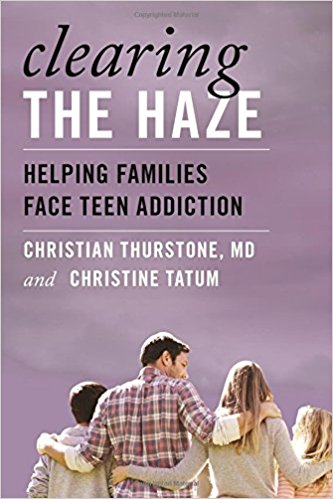Overall crime in the City and County of Denver has increased nearly 7 percent in the first six months of 2014 compared to the same period last year, according to new analyses of Colorado crime data.
The numbers, released by the Rocky Mountain High Intensity Drug Trafficking Area (HIDTA), differ markedly from widely published reports claiming crime in the Mile High City has dropped since the state opened its first recreational marijuana shops Jan. 1. (This April 7 report in the Washington Post is a great example of how journalists have jumped the gun — so to speak — on declarations that “crime is down across the board.”)
Before unpacking the numbers, HIDTA officials said they do “not infer causality” between the increased crime rates they found and the opening of Colorado’s recreational pot shops, most of which are concentrated in Denver. Similarly, marijuana proponents should not claim the drug’s legalization has caused crime to drop.
OK, so why such sharp discrepancy between the numbers reported by marijuana-interest groups, marijuana-cheerleading reporters and the HIDTA analyses, which are based on data collected by the National Incident Based Reporting System (NIBRS) and prepared to Denver Department of Safety Public Information Standards?
Rocky Mountain HIDTA Director Tom Gorman explains:
“The marijuana advocates’ claims boil down to old-fashioned cherry picking. What they are not telling everybody is that they are not looking at all reported crime categories in Denver, or even at all the crimes that fall under those categories. They are taking the numbers that favor their position — and in their case, those numbers are some of the crimes included in the FBI Uniform Crime Report, Part I.
“If you want a true and complete picture of all crime in Denver, you have to look at the Denver report that uses the National Incident Based Reporting System (NIRBS) because the FBI Uniform Crime Report (UCR) captures only about 50 percent of all crimes reported — and tracked — in Denver.”
To illustrate how much more thoroughly NIRBS data are tracked than the UCR data, Mr. Gorman’s office provided this quick chart listing only two categories of crime. The numbers in parenthesis refer to the number of subcategories of crime tracked under that larger category. (Note: For example, the FBI report looks at four subcategories of “violent crime,” while the Denver Police Department tracks those four subcategories and three others under the heading “crimes against persons.”)
The NIRBS data show overall crime in Denver is up 6.7% when comparing the first six months of 2014 to the first six months of 2013.
We encourage you to review all of the numbers for yourself, but here are some highlights:
Crimes against people in Denver County increased more than 18 percent. Under this category:
- There were 21 murders in the first six months of 2013 and 13 in the same period of this year. That’s a drop of 38 percent.
- Aggravated assault was up 2.2 percent, from 1,167 reports to 1,193.
- Simple assault increased 35 percent, from 1,634 reports to 2,207.
- Reports of intimidation jumped 45 percent, from 370 reports to 537.
- Forcible sex offenses dropped from 419 reports to 340 reports, or 18.9 percent.
- Non-forcible sex offenses declined from 12 to 7, or 41.7 percent.
Reports falling under the category of crimes against property fell 8 percent. However, subcategories of crime often involving marijuana were on the rise, Mr. Gorman noted. Among them were reports of stolen property, which increased 16.4 percent.
Criminal offenses reported under the category of crimes against society increased 22.8 percent. Under this category:
- Drug/Narcotics Violations increased 20.6 percent, from 1,069 reports to 1,289 reports.
- Weapon law violations jumped 43 percent from 209 reports to 299 reports.
Criminal offenses falling under the category titled “all other offenses,” nearly doubled with an increase of 96.2 percent. Under this category:
- Reports of disorderly conduct and disturbing the peace skyrocketed 214 percent from 234 reports in the first six months of 2013 to 735 reports in the same period of this year.
- Family offenses considered nonviolent jumped 30 percent from 174 to 227 reports.
- Criminal trespassing also rocketed up 162.4 percent from from 274 reports to 719.
- Liquor law and drunkenness violations were up 237 percent from 27 reported offenses to 64.
Like the Rocky Mountain HIDTA, the National Association of Drug Court Professionals has examined the NIRBS data. Researchers affiliated with that organization compared the first six months of each of the last five years and found that reports of simple assault and domestic violence have risen steadily.
“We are not inferring causality between these increases … just like legalization proponents should not infer causality regarding the downward trend observable when isolating just the UCR’s Part One Crime Index,” NADCP Chief Executive Officer West Huddleston recently wrote. “However, we are promoting the position that the question remains open, and at best we can say there is contradictory evidence when trying to draw conclusions about the effect marijuana legalization has had on crime.”
It’s past time for news organizations to report this more accurate picture of crime in Denver — and not just the numbers handed to them by marijuana proponents or the numbers they select to build their preferred narratives.




We welcome all thoughtful comments, but please abide by our commenting rules